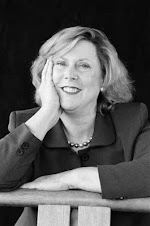Other areas and wines are making a claim to be definitive for American wine — the elegant Pinot Noir produced in Oregon’s Willamette Valley; Washington state’s rich, luscious Syrah from the Walla Walla region; and the delicious Riesling from New York’s Finger Lakes — but California’s Napa Valley remains the most famous winemaking region in the United States, and its primary wine, Cabernet Sauvignon, is still king.
This is due in large part to the marketing genius of the late Robert Mondavi. Napa had produced great Cabernet in the distant past, notably from the Inglenook and Beaulieu wineries, but when Mondavi opened his own namesake winery in Oakville, Calif., in 1966 after a tumultuous partnership with his brother Peter at the Charles Krug winery, he sought to give the Napa Valley the same cachet as held by France’s famous Bordeux appellations. And to a great extent, he succeeded.
 |
| Robert Mondavi looking pretty determined! |
Indeed, the argument can be made that Mondavi succeeded too well. Even before the advent of so-called “cult” Cabernets in the 1990s, prices for upper-end Napa Valley Cabernet Sauvignon were generally higher than for any other American wine, and a good portion of those prices was generated by the Napa Valley mystique Mondavi had created and so effectively marketed. (Interesting trivia sidebar: Did you know that Robert Mondavi and Bob Dylan were both young children in the same town? It’s true, and that town is Hibbing, Minnesota, not exactly the heart of rock and roll or the wine industry!)
But the cult wines took things to a new level. After capturing the hearts, minds, taste buds and flowery pens of influential critics, including Robert Parker, these wines competed with the most expensive French Bordeaux. They still do. A quick Internet check finds a single bottle of 2012 Napa Valley Cabernet Sauvignon from Screaming Eagle, which Parker’s Wine Advocate publication awarded with a perfect 100-point score, available at Shopwinedirect.com for a bargain $2,399.95. A 2011 Pritchard Hill Napa Valley Cabernet Sauvignon from Bryant Family Vineyards is available at the Mister Wright wine shop in Manhattan for $600. Vinfolio, another online wine retailer, offers a bottle of 2011 Napa Valley Cabernet Sauvignon from Colgin Cellars for $495 and a 2010 Madrona Ranch Napa Valley Cabernet Sauvignon from Abreu for $575.
I’ve had an occasion or two to taste a couple of these cult wines, and personally I find them overdone, overblown and most definitely over-priced. They remind me of blockbuster superhero movies: take away all the flash and special effects, and you don’t have much of a story, really. To my taste, these ultra-high-end Napa Valley wines fail in wine’s most basic job, which is to accompany food. They are just too rich and dense, and generally have way too much alcohol (15%, even higher, isn’t uncommon for these wines) to accompany anything but themselves. No thanks.
But that’s me. Cult wines have cults for a reason. I just don’t belong to any.
Fortunately, there are plenty of less expensive Napa Valley Cabernets from numerous producers that are complex and balanced and will deliciously accompany steak and other Cabernet-friendly goods. I love the Cabernet made by Randy Dunn at Dunn Vineyards. Not only are Randy’s wines as graceful and beautiful as Ingrid Bergman, they don’t carry the high alcohol that the cult wines generally do.
Silver Oak is another reliable Napa Valley producer of wonderful Cabernet. Same with Stag’s Leap, Cakebread and Spottswoode. You won’t go wrong with a Robert Mondavi Private Reserve Napa Valley Cabernet Sauvignon, either. And good old Beaulieu Vineyards still makes a superlative Cabernet under its Georges de Latour designation.
None of these wines cost anything close to the cult wines, but they’re not cheap. A bottle of Dunn, if you can find one online, runs $80 or more. The Mondavi will be in the neighborhood of $120 and a Stag’s Leap will be in the same territory — but then, it was a Stag’s Leap Cabernet that knocked the priciest French Bordeaux on its butt at the famous Paris Tasting of 1976, so they’ve earned extra cred.
 |
| Steak and Caesar and Napa Cab: Yum! |
For me, a good Napa Valley Cabernet Sauvignon is a special occasion wine. I’ll buy one every once in a while and put it away in the cellar to forget about for several years. When the occasion’s right I’ll bring a dusty bottle back up into the light, pull the cork and share it with people I love over a good steak or simple Caesar salad. (Try it: Cabernet matches wonderfully with a Caesar.) It’s like bringing a work of art to the table for everyone to admire and be inspired by.
There may still be a lot of marketing razzmatazz driving Napa Valley’s reputation, but there’s a lot of good wine behind it, too. Robert Mondavi was not wrong about that. At its balanced and well-aged best, Napa Valley Cabernet Sauvignon is still the definitive American wine. I would never pass up a glass. Would you?
Guest Blogger Steve Bjerklie notes this about his love of wine:
 |
| Steve and his gal Polly enjoying the New Hampshire snow at Tuckerman's Farm |
This article was first published in The Upper Valley ezine: http://theuppervalley.com/news/still-king/







No comments:
Post a Comment